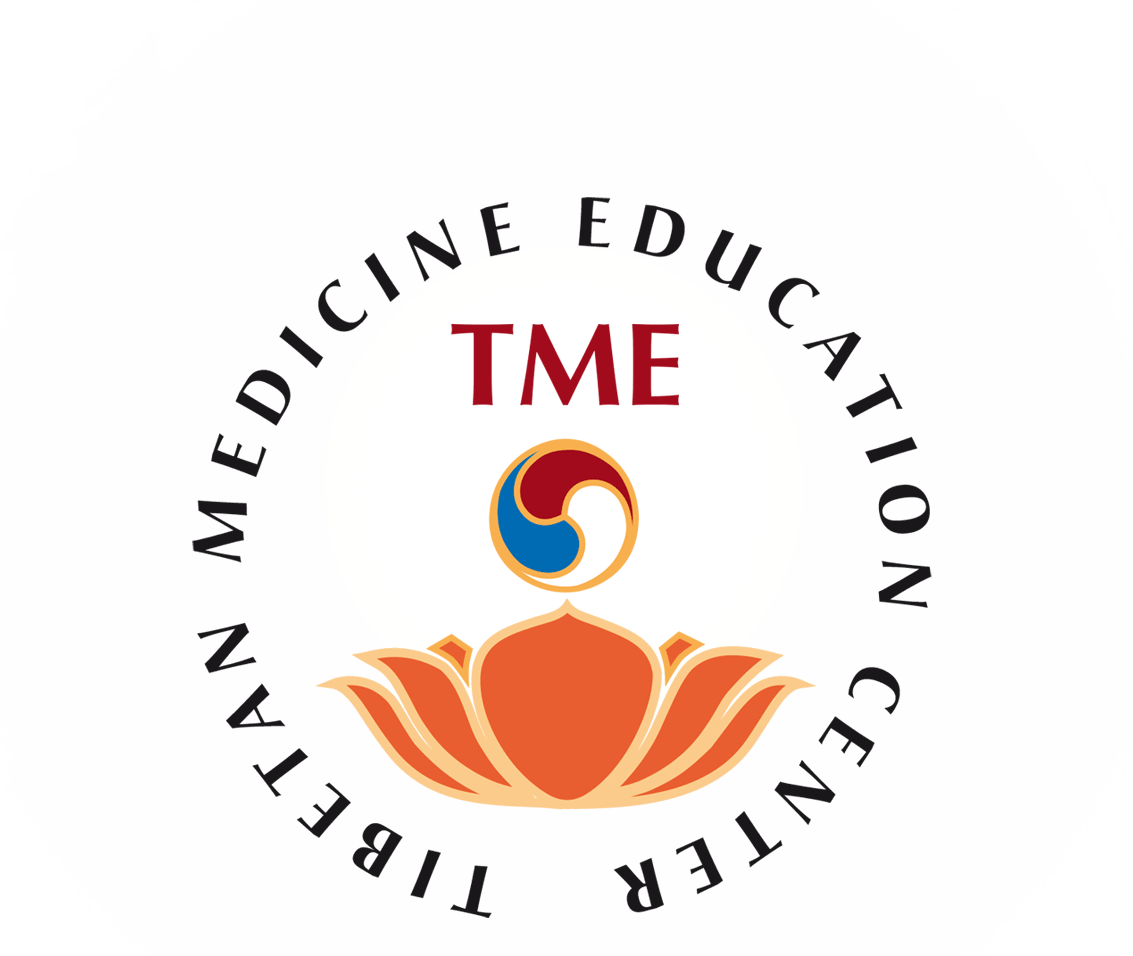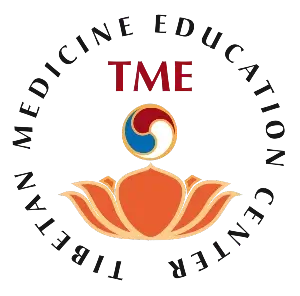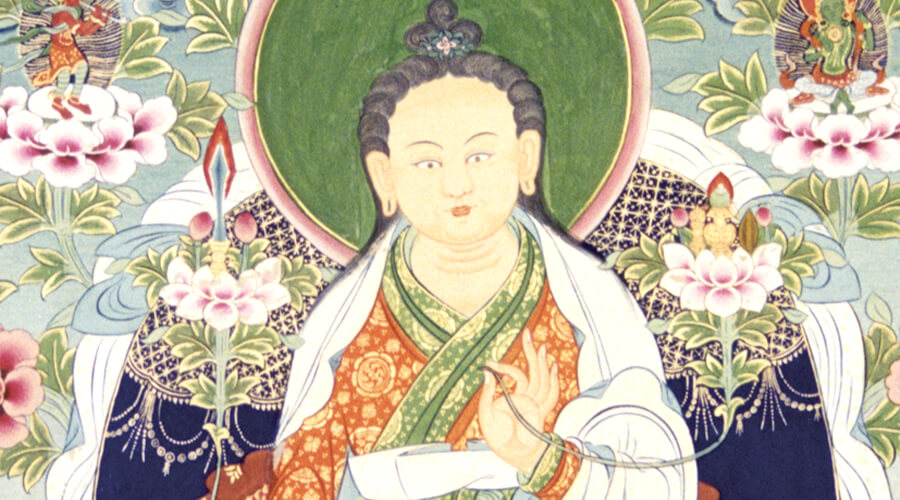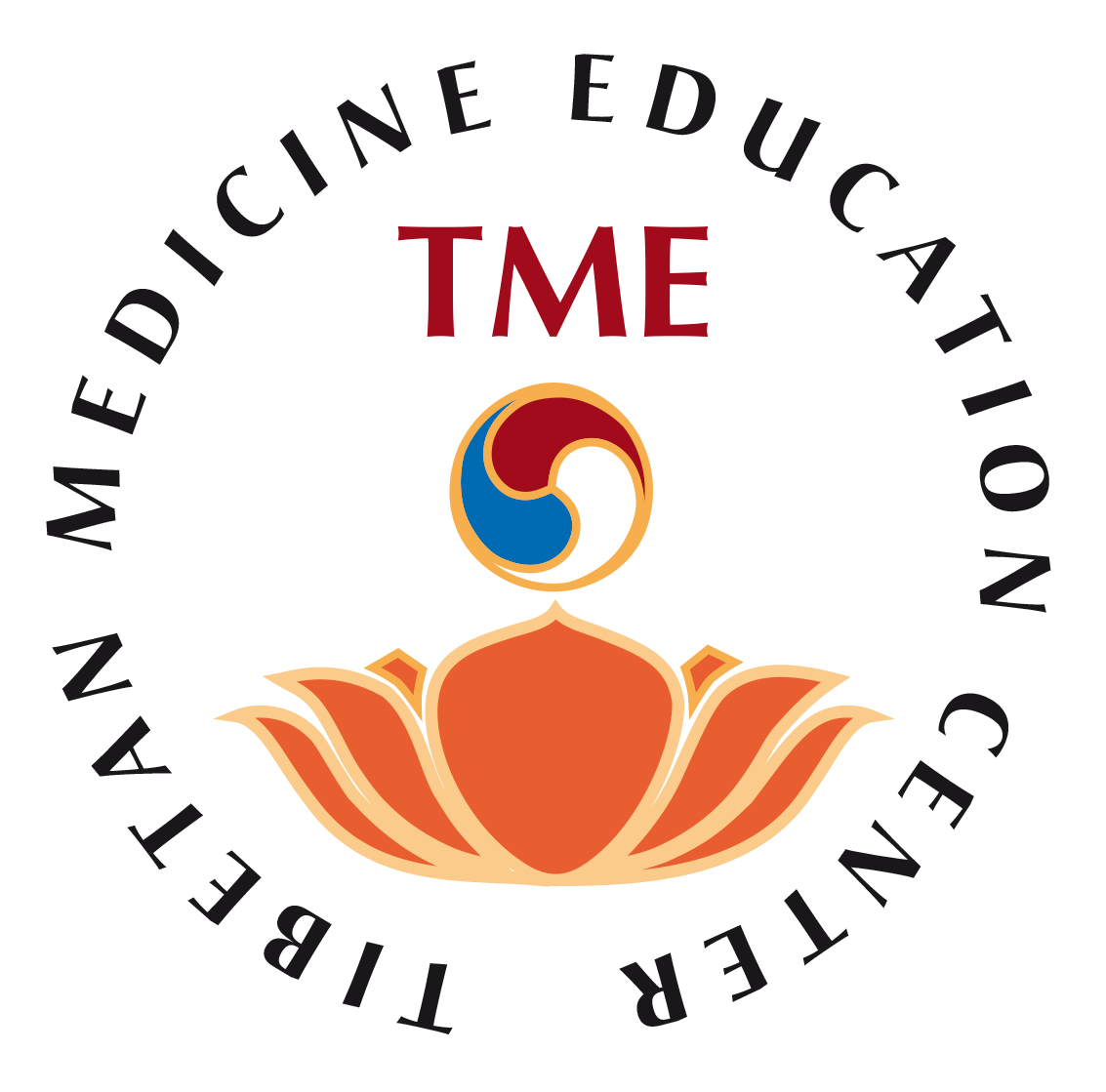Tibetan Medicine History
History of the Tibetan Medicine System
– Part 3
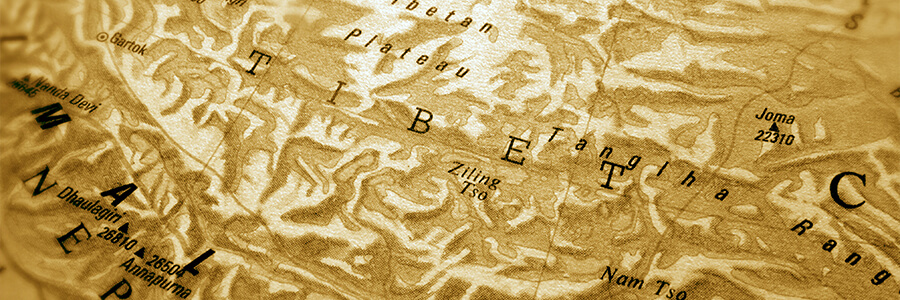
Dr. Pasang Y. Arya
According to bShad mdzod yid bzhin nor bu[1], the Indian physician Bhardavaja and the Nepalese physician Balaha translated the Indian treaties on medicinal butter, medicinal chang, (medicinal wines), extracting the essence on the nectar of immortality, the tantra on Somaraja for curing leprosy and the hundred thousand verses on the science of healing. These were the first translations. Because of the extent of Song Tsan Gampo’s military might the Nepalese king Odzer Gocha (Acshu Verman) and the Chinese emperor Tang Tai Chung had to offer him their princesses Khri Tsun (Brikuti) and Kongjo respectively in order to safeguard themselves. The Chinese princess brought with her Chinese physicians and their system in its entirety. Later Hashang Mahadeva and Tibetan translator Dharmakosa translated the Chinese texts into Tibetan. During the time of the Tibetan king Me-Ag-Tsom (8th century) the five texts: the Four Tantras and the concluding chapter were translated, which marked the second phase of translation[2]. This was the time when the Elder Yuthok (708-833) was in his prime and it seems very likely that he studied the Indian texts in India as well as the early Tibetan translations of the Four Tantras. ln 710 when the Chinese princess Kim Shing Kong Jo came as a bride to Tibet, she brought with her the text called sMan dpyad zia ba’i rgyal po which had 115 chapters. This was translated by Hashang Mahakinda and the Tibetan master physicians Gyatuk Garkhan, Khyungpo Tze-Tze, Khyungpo Namtsuk and Chokla Monbar. Further, Trisong Deutsan sent messengers to Tibet’s neighbours and invited several great physicians such as Shantigarbha from India; Ha Shang Baia, Tongsum Gangwa and Hangti Pata from China; Guyu Vajra from Kashmir; Hala Shinti from Turkistan; Sengdo Odchen from Dru-gu (Amdo); Kyolma Rutzo from Dolpo (Mustang) and Dharmasala from Nepal[3]. Each of them not only practised their own systems but translated their texts. Their works were compiled into a system called Bla dpyad po ti smug po. The king was very pleased with them and issued the following edict:
“All these physicians
Must be honoured by the black-haired Tibetans
Because they protect life.
The King is the lord of all the black-haired,
One honoured by him is the Lord of beings,
So place them in the front raw.
Lay a tiger skin and silken brocade on his seat,
Receive and see off them with gold coins to his horsemen,
Obey their advice and do not go against his words.
ln this (my) kingdom life is precious,
Do not offer rewards for that which is stolen from you;
But be ready to pay gold for even powder medicines.
Refresh the physicians with food and drink,
And in order to retain them for a long time
Avoid insincerity and talking behind their back.
Offer them silk robes and woollen boots,
Use honorific language and pay them respect.
Think of their kindness and repay it in their life.
These are the 13 codes of conduct I offer,
Whosoever transgresses them will be punished.”
These are the 13 codes of conduct he declared to maintain good relations between the people and the physicians. He concluded his code by saying,
“The physicians are like fathers,
The sick are to be pitied.
They are the sons,
Do not declare their faults.”
The principal court physician Shantigarba translated sN go ‘bum le’u brgya dang nyi shu, a text on herbs which contained 120 chapters and a text on botany called Rin chen sgron me which had three chapters. A few of these chapters still exist[4].
The Elder Yuthok (708-833) was born to Khyungpo Dorje and Gyasa Choedon in the Earth-Male-Monkey year. He possessed super human qualities and was expert in performing miracles. At the age of 10 he was invited to Samye by king MeAg-Tsom. At the age of 20, in 728, he went on a tour and participated in a scholarly debate on the science of healing at Samye, in which he eamed a reputation and the respect of Tibetan physicians. He travelled to India on three occasions and in Tibet he propagated the science of medicine and taught many students. He lived for 120 years and passed away into the field of the Medicine Buddha.
According to the Tibetan medical system the Elder Yuthok and king Trisong Deutsan (742-798) were born in the same year during the early part of Song Tsen Gampo’s reign. According the Kongtrul Yonten Gyatso (1813-1899) “the visit of the court physicians from the four bordering regions appears to have been during the early part of the reign of Tri Song and during the later part of his life nine physicians arrived.” Some say that this is a baseless assertion but I have my own reservations about it[5]. After the arrival of Shantarakshita and Padmasambhava in Tibet, the translator Vairocana went to India. It was during this period that many Buddhist texts, including the Four Glorious Tantras of medicine were translated into Tibetan. When Yuthok was twenty-five, Acharya Padmasambhava and Trisong concealed the medicine Tantras in treasure houses[6]. Other Tibetan master physicians such as the court physician Drangti Gyalnye Kharbug and Nyapa Choesang extensively spread the science of medicine. These were famous physicians during the early propagation of Buddhism and were responsible for translating the medical texts from the bordering regions.
The Dark Period of Tibetan History
After 842, when Lang Darma was assassinated, Tibet was divided into many small principalities. At the same time the early system of Tibetan medicine also suffered a decline. At the beginning of the later propagation of Buddhism, at the instigation of the Lha Lama Yeshi ‘Gd, the great translator Rinchen Zangpo (958-1055) was sent to India at the age of seventeen. He became proficient in the sutras, tantras and all aspects of learning. He made an offering of a hundred gold coins to the Kashmiri Panddit Jnanada and with him translated the texts Yan lag brgyad pa’i snying po bsdus pa (astanga hrdaya samhita) and ‘Grel pa zIa zer le’u bco Inga pa (Chandrika, the commentary on Astanga hrdaya samhita) and rta dpyad (shalihotra) into Tibetan. He taught many disciples among whom the four physicians of Purang are well known. His fame spread not only throughout Tibet but also into China and Mongolia. He thus laid the foundation of Tibetan medicine and came to be known as the only pandit of the later propagation.
Because his lineage continued unbroken the later Yuthok lineage of practice and theory spread widely. ln 1040, Atisha Dipamkara came to Tibet and translated sMan dpyad sha sbyor dar ya kan and mGo dpyad dra ba sdom pa. The Indian abbot pandit Krishna and the translator Bende Choerab translated the Somaraja text. This text and the one translated by Vairocana (8th century) and the Chinese Ha-Shang which was also known as Somaraja are, according to Desi, similar in both content and number of chapters. ln all there were four translated texts known as Somaraja in Tibet. According to Desi’s work Khog ‘bugs drang srong dgyes pa’i dg’a ston this Somaraja as mentioned in treasury text BIon po bk’a thang which says, “The Somaraja composed by Nagarjuna and …” is said to be a corrupt text.
However, the content and the names of the medicines mentioned in these treatises can be found to be the same; so one can claim that the Somaraja is either a translation from India or a Chinese translation from India[7].
According to Baid’urya gy’a sel p.303/13 this treatise (Somaraja) travelled from China to India[8]. It is also possible that it could be a compilation by a group of physicians such as the great astrologer Khyungpo Ngamtshuk of Tibet and physicians who arrived from the bordering regions. However there is still room for futher research. Zhang Zijidbar who lived around 1090 travelled to India[9] with a huge amount of gold after being unsatisfied by his studies under nine scholars in Tibet. He studied the eight branches of Indian science of medicine at the feet of Rishi Canbhi after making a golden mandala offering to him. On his return from India he propagated the science of medicine in Tibet.
The Treasure master Drapa Ngon Shes (1012-1090) was prophesied in a text called Thang-yig Shel brag ma:
“At the time when one is worse than others
and Jang and Chinese quarrellike ants,
The medical text treasures at U-tse
And the treasures hidden at the three Jomo Ling sites
Will no longer remain but be revealed when
One, bearing the marks of a treasurer,
Known as Drapa Ngon Shes appears.”
As prophesied, he extracted the Four Glorious Medicine Tantras, which are the essence of the whole science of healing from beneath the vase shaped pillar in Samye U-Tse. It is said in Tangyig that this occurred in 883. He later wrote a summary of the Four Tantras and passed the lineage to U-Pa Dardak[10] who passed it onto Tshalung-pa Rogton Kunchog Kyab[11] who later composed the text rTsod ldog gegs sel and gave it to the new Yonten Gonpo.
………………………………………………………………….
- [1] sDe-srid Sangs rgyas rgya-mtsho, khong ‘bugs PI 50 L8-16.
- [2] Dondam sma wa’i senge, bShad mzod yid bzhin norbu, Dr. Lokesh Chandra, Delhi edition P292 LI.
- [3] Kong sprul, sHes bya kun khyab, Lokesh Chandra, Delhi edition P215.
- [4] Lung rig bstan dar, rGyud bzhi’i mtha’ dpyod, P66 L6.
- [5]
A) sDe-srid Sangs rgyas rgya-mtsho, Phyi rghud baid’urya sngon po, Tashi Yangphel, Delhi edition 1973 P245LA.
B) Sngo sbyor ‘khrungs dpe man ngag rin chen, Library of Tibetan works and Archives, Dharamshala 1980 P233 L6. - [6] These are undoubtedly very ancient and rare texts and I feel they should be regarded as authentic. The colophon of the text says that it was translated by the great Indian master Shantigharba and seven court physicians.
- [7] Sangs rgyas rgya mtsho, Khog ‘bugs drang srong dgyes pa’i dg’a ston. Kansu edition, 1982 P152.
- [8] According to Baid’urya gy’a sel P303 L3 this text originated in China and came to India, which was later translated into Tibetan by the translator Bende Chos Kyi Yeshi with the Indian Pandita Krishna.
- [9] He left for India to study medicine because even the most famous physician among the nine traditions of Tibet could not satisfy him.
- [10] The dates of the hiding and discovery of this treasure text are controversial. The above text says that when the Elder Yuthok was 25 years old, the King and Acharya hid a store of texts for three days in the desire realm that is for 150 years. However, Yuthok Yonten Gonpo was born in Earth-Male year in 708. If he hid the texts when he was 25 years old, that would have been in 733 A.D. Therefore the treasure master Drapa Ngon Shes must have found the texts in 883. This leaves a discrepancy of nearly three sexagenaries between this date and birth of Drapa Ngon Shes as recorded in the standard historical chronology.
- [11] He is also called Rogton Kunchog Kyab or Tonchen Kunchog Kyab.
